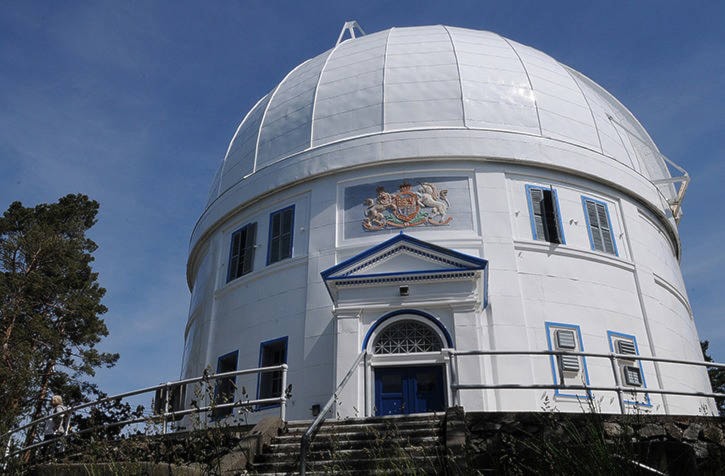It might be common knowledge Earth is not the centre of the universe, but fewer people are likely aware that was confirmed scientifically on Vancouver Island.
The Nanaimo Astronomy Society’s guest speaker for its March meeting will discuss the history of Victoria’s Dominion Astrophysical Observatory that put Vancouver Island on the map while mapping our place in the cosmos and, with a 1.83-metre aperture, was for a brief time the world’s largest optical telescope.
Dan Posey, Friends of the Dominion Astrophysical Observatory board member and member of the Royal Astronomical Society of Canada, presents Gateway to the Stars, Civic Identity, and Tourism at the Dominion Astrophysical Observatory, Victoria B.C., 1903-1941.
At the time of its completion in 1918, the DAO was one of the world’s leading facilities of its kind where researchers made major contributions furthering knowledge of the universe.
“Throughout the 1920s [observatory staff’s] radial velocities of binary stars led them to make sweeping discoveries of the size and structure of the Milky Way Galaxy and, you have to understand, that during the 1910s and early 1900s the Copernican question was very alive and well, which was to ask where we fit in the universe and what placement the Earth has in the scale of that of the galaxy,” Posey said.
It was Dutch astronomer Jan Oort who worked out the calculations predicting the size and rotation of the Milky Way Galaxy, that Earth and the solar system was about 19,200 light years from the galaxy’s centre and took about 225 million years to complete an orbit around the galaxy. Prior to then the accepted galaxy model was that it was symmetrical around the Sun.
It was in Victoria that researchers were first able to make the measurements confirming the first truly modern image of the galaxy and how it functioned.
“All of Oort’s initial investigation into rotations were confirmed in Victoria, but it was the confirmation that really led to this being an established science and an established method of understanding the size and structure of the Milky Way … the size of the telescope in Victoria and, particularly, the efficiency of it allowed them to engage in these very ambitious observing programs that you just wouldn’t be able to do with a lesser instrument,” Posey said.
While the observatory was producing discoveries on forefront of astrophysics, it also became a key tourism destination. It was open to the public and thousands of people took their turns peering at the heavens through one of the world’s largest optical telescopes.
The observatory’s research contributions and location, chosen because of Victoria’s climate and weather, also became a testament to southern Vancouver Island’s mild conditions and to Victoria as a modern centre of culture and scientific advancement, which drew people from throughout the British Empire.
The observatory’s completion was delayed, in part, because of the First World War and due to problems manufacturing its mirror, but it was a symbol of hope and promise of the future against the backdrop of a world in conflict.
“It’s quite fascinating to look at the old articles and you see a hopeful article about the promise of the new observatory right next to an analysis about the state of the Western Front,” Posey said.
After the DAO telescope first saw light, it was the world’s largest telescope for about six months before it was eclipsed by the 2.54-metre telescope at Mount Wilson Observatory in Los Angeles.
Also at this week’s meeting, club member Dr. Bill Weller will also present Practical Introduction to Basic Astronomy: The Tools of Astronomy. Nanaimo Astronomy Society’s March meeting happens at Beban Park social centre on Thursday, March 22, 7-9 p.m.
To learn more, visit www.nanaimoastronomy.com/.
photos@nanaimobulletin.com
Like us on Facebook and follow us on Twitter
